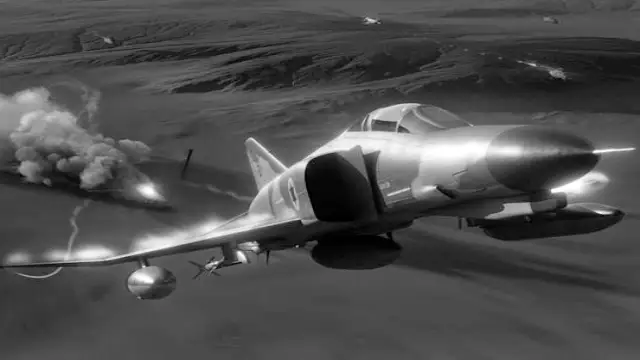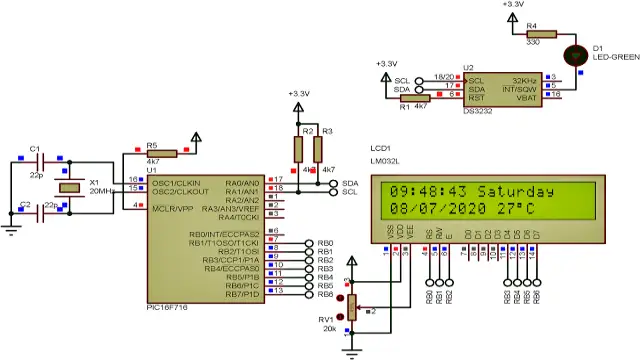I have posted infrequently during the 2015 World Cup. Time constraints have meant that I’ve felt it is better to write fewer, longer posts, than to review individual games. This post is intended as a guide to watching ODI cricket. What should you look for? What might tell you how a contest is going, and what teams are trying to do? What might tell you what limitations teams have? It is in three parts. First, I discuss the effect of field restrictions. Second, I discuss the Sri Lanka v South Africa matchup at length, and Third, I rate the prospects of each side to win the World Cup. The first part is intended to give you some idea of how i see the 50 over contest, the second is an example discussed at length and the third is overview of the remaining sides based on this method.
————————————————————————————————————————-
In my review of the first fortnight of the 2015 World Cup, I pointed to two things – the quality of the wickets, and the quality of bowling, as the deciding factors in the World Cup. The second fortnight of the World Cup has demonstrated that this is broadly true, and that while much of the analysis of cricket in the tournament has focussed on the batting end, it is in the field that the tournament will be won or lost.
The standard argument goes something like this. With T20 cricket, more batsmen are able to play more shots than ever before, and therefore, 300 is now a par total. That last part is not true. The World Cup has shown a couple of other interesting things. With the new field restrictions, of the 8 conventional boundary scoring areas – long-off, long-on, mid-wicket, square-leg, cover, cover-point, fine-leg and third-man, only 4 can be covered. Previously, 5 could be covered. What does this mean?
| A STANDARD FIELD UNDER THE OLD RULES WHICH PERMITTED 5 FIELDERS ON THE BOUNDARY TO A RIGHT ARM SEAMER BOWLING TO A RIGHT ARM BATSMAN |
Under the old rules, this would typically involve a field like this. The area behind square on the leg side could invariably be covered by two fielders on the boundary. The traditional boundary scoring areas were therefore mid-wicket or cover. That’s where the gaps were, where it was possible to hit over the in-field. Another favorite area was over cover-point, between the third-man and deep-cover.
This allowed captains and bowlers a lot of leeway. Let me illustrate this by setting up a field for a right arm bowler under the new rules. Here are six examples.
The requirement that 5 fielders remain in the 30 yard circle as opposed to four has radically changed the balance of the contest between bat and ball. In fact, I would suggest that the extent of the change is consistently underestimated and trivialized by focusing solely on the idea that it now permits batsmen to “go over the top”.
The central effect of the new field restrictions has been to make life extremely difficult for bowlers with limited ability. The problem, or feature (depending on how you see it), of ODI cricket in the “middle-overs” was that bowling sides would not chase wickets, and batting sides would be content to take whatever runs came their way against defensive fields with five fielders on the boundary. Bowlers who couldn’t bowl quick, couldn’t turn the ball, couldn’t bowl cutters, or couldn’t get it to swing or move off the seam, survived with these fields.
Why did they survive? Just look at the field the first chart above. With five on the boundary, it was possible to simultaneously protect boundaries for three kinds of bad deliveries – the short ball outside off stump, the half volley on off stump, and short ball on or outside leg-stump.
With only four on the boundary, suddenly, bowlers who don’t have enough control are proving costly. So a part timer spinner who tends to drop at least one ball an over short, or send at least one ball an over drifting past leg stump, now costs his team a lot more runs than he used to. Basically, imagine, if you will, the difference between the number of runs conceded by JP Duminy and the number of runs conceded by Daniel Vettori or Rangana Herath. Vettori and Herath have better control, Duminy tends to drag one (or even two) short every over, and because he has this tendency, also over-compensates and bowls a half volley or two every over as well. All these mistakes would have cost South Africa just one or two in an earlier era. Today, they are likely to cost them 3, 4 or even 6.
One underestimated effect of the new field restrictions has been in the area of six hitting. It is true that batsmen seem more willing to clear the boundary these days. But I would suggest that this is because there are many more boundaries to aim at which are not protected. A batsman is more likely to try and loft a spinner for six over long-on when the fielder is at mid-on, than he is when the fielder is at long-on.
Apart from increasing the cost of bad bowling, the new restrictions have also forced fielding sides to basically give the batsman a very good idea of what line and length they will bowl with a given field setting. Consider the field-settings from left to right in the first row above. The preferred line and lengths for a right arm bowler for each field is fairly obvious isn’t it? From left to right in the first row, these are:
1. Short, into the body on leg-stump, or very full on the 6th or 7th stump
2. Short of a good-length, inviting the scoring shot square of the wicket.
3. On leg-stump, perhaps from round the wicket.
In the second row, from left to right:
1. Short and wide outside off stump.
2. On leg-stump, following the batsman if he backs away.
3. Full and straight.
Having said that there are ideal lines and lengths, it quickly becomes apparent that this is not sufficient. What pace can the bowler deliver these lines and lengths at? Its much easier to hit Thisara Perera to mid-wicket from the 6th stump outside off, than it is to hit Mohammad Shami. Similarly, its much harder to hit Ashwin, who turns the ball hard, against the spin through the off side, than it is to hit JP Duminy, who doesn’t turn the ball as much.
The reward for being able to do something with the ball – bowl it really fast, or turn it really hard, or swing it, or move it off the seam – has become that much greater with the new field settings.
You can see the pattern of this argument. Its not that the batsmen have become more innovative, it is that batsmen have been provided with more opportunities. Consequently, bowling depth has become far more significant than it used to be.
You see, in the days of 5-outside-the-circle, teams could get away with plausible looking part-timers for 15 or even 20 overs. Teams had begun to play only two serious wicket taking bowlers, and pick the first 9 spots in the order at least partly based on their ability to bat. A bowler like Dilshan is the prime example. With 5 outside the circle, Dilshan was a consistent all-round asset. Even on bad days, he might go for 5.5 or 6 an over, as opposed to 4 to 4.5 an over on good days. With 4-outside-the-circle, his bad days now cost Sri Lanka 7 or even 8 an over. This has multiple effects. When he went for 5.5 or 6 an over, captains might still use him for 7 or 8 overs. Now, when he goes for 7 or 8 an over on a bad day, captains are forced to take him off after three or four overs and use someone else. The greater cost of bad bowling has a multiplier effect because it reduces the options available to a fielding captain.
So the best ODI sides these days are sides who can challenge with the ball for as many as possible of the 50 overs. Take Sri Lanka v South Africa as an example. Here is how I think about this match-up.
SOUTH AFRICA v SRI LANKA
South Africa’s batting is top heavy. They have 2 exceptional players – AB de Villiers and Hashim Amla, 1 very good player – Faf du Plessis, 1 good player – JP Duminy, and 3 largely untested players – Quinton de Kock, Riley Rossouw and David Miller. Miller has made his name bashing bad attacks in T20 leagues around the world, but his record in One Day internationals after 62 games is modest. He’s clearly a powerful hitter, but whether he has the technical ability to defend against good bowling, remains an open question. Against India, Pakistan, Australia and New Zealand – 4 attacks who have consistently offered one or both of the following – raw pace or hard spin – Miller averages 22.2 in 35 innings. de Kock and Rossouw are new and largely unknown entities. de Kock has done well at home (a common trait among batsmen around the world), and Rossouw seems to be in very good form, but there is a lot of uncertainty among those three. JP Duminy has been around a long time, and like Suresh Raina for India, his limitations and abilities are well known by now. So that’s South Africa’s batting – top heavy, lacking in depth.
South Africa’s bowling is a different story. Dale Steyn is arguably one of the five greatest fast bowlers of all time. Many people seem to discount him as an ODI bowler, but this tendency is cut from the same cloth which causes people to rate Miller as a massive ODI threat. Morne Morkel is bowling quicker and more accurately than he ever has, and Vernon Philander is accurate takes a lot of wickets. His replacement, Kyle Abbott can consistently challenge good batsman too. Wayne Parnell is erratic, but capable of serious pace. Imran Tahir is probably the best leg spinner in the world right now. He also one of those bowlers who is regularly discounted, but he takes wickets and rarely gets hit. At age 35, he’s an experienced bowler with more than five and half thousand first class overs under his belt. His overall ODI record of 66 wickets at 20.7 in 35 innings looks even more impressive when you consider that if we discount the “lighter sides”*, he has taken 52 wickets in 27 innings and conceded 4.5 an over. Tahir gives South Africa a great deal of depth and variety.
It is true that the 5th bowler remains a problem for South Africa. India’s 307/7 at MCG on February 22 was built around Wayne Parnell being taken for 85 in his 9 overs. On an excellent batting pitch on a warm afternoon, despite losing Philander to injury, Philander, Morkel, Steyn, Duminy and Tahir took 222/4 in 41 overs (including all 15 powerplay overs).
Compare South Africa’s bowling to Sri Lanka’s. Apart from Malinga, Herath, Sri Lanka’s options are modest. They will choose a second new ball bowler out of Nuwan Kulasekara, Suranga Lakmal or Dushmantha Chameera. They will pick a second spinner out of Seekkuge Prasanna or Sachittra Senanayake. Their problem is that there aren’t two bowlers in these 5 who a serious wicket taking threats – who possess either the control or the ability to challenge good batsman. Nor do these 5 possess proven ability to hit the long ball. As a result, especially if the wicket is flat, Sri Lanka are likely to play with Herath and Malinga (fitness permitting), Matthews, Perera, and out of these five bowlers. They’re likely to pick the extra batsman – Upul Tharanga – an opener – to bat at number 7.
Assuming that both Herath and Philander or Abbott are fit, South Africa will play with 4 serious wicket taking threats, while Sri Lanka will play with only 2. South Africa’s advantage here is more than double. With only 2 such bowlers, Matthews is forced to use Malinga sparingly outside the batting powerplay and the final 10 overs. This forces Matthews to use Malinga as a holding bowler, rather than as an attacking option to get ahead in the game. Over the past year, Lakmal has looked promising, but even he got taken for 71 in less than 8 overs by England.
Sri Lanka bat deeper than South Africa. Jayawardene is a more dependable ODI batsman compared to Miller or Duminy. Sangakkara and Dilshan are in top form and have a lot of experience playing against world class bowling. But consider the mis-match between the South Africa and Sri Lanka attacks, and then consider how much ground Sri Lanka’s batsmen will have to make up.
Both sides may benefit from using a pinch-hitter to ensure that they bat deep. South Africa may want to use Wayne Parnell or Vernon Philander at number 3 or 4 if the opportunity arises when the first change bowlers are on. Even if this player makes 20 at that time, and South Africa score at 4 or 4.5 an over for a period of 8-10 overs in the process, it will put great pressure on the Sri Lankan attack given the batting to come. South Africa should ideally use such a player before de Villiers or du Plessis, and promote Rossouw to open, and get de Villiers to keep wickets. The best balanced South African side would have the following batting order:
Amla, Rossouw, Parnell, du Plessis, de Villiers, Duminy, Miller, Philander/Abbott, Steyn, Morkel, Tahir
This shields Miller’s suspect defense and makes the most of his brute strength. It also provides de Villiers with the extra bowling option. Duminy becomes his 6th bowler.
Sri Lanka bat deeper than South Africa, but losing Chandimal will hurt them. Upul Tharanga is wasted in the middle order, they might as well promote him. Fitness permitting, Sri Lanka’s best XI will look something like this in my view.
Dilshan, Thirimanne, Tharanga, Sangakkara, Jayawardene, Matthews, Perera, Prasanna, Herath, Lakmal, Malinga
This is how I think the ODI contest runs under the new rules. The team which can offer the best quality at the greatest depth will win. Between the team which can produce 40 quality overs and the team which can produce 20 quality overs, the former has to be the favorite, even with a slightly weaker batting line up. This is simply because the better bowling side can compete longer. And the more competitive batting side is the one which can take advantage of bad bowling longer.
I’m going to set aside the self-fulfilling psycho-analysis about choking and other such things. In general, if a result can be explained by cricketing reasons, why get into these decidedly questionable rationales?
Could the game be won by a single batsman playing out of his skin? Perhaps, but there are caveats. Such instances are extremely rare. Discounting games against the lighter sides, the most number of undefeated hundreds by a batsman in the top 4 in the first innings of an ODI which was not washed out, is 7. Desmond Haynes achieved this (out of 100 1st innings). Nobody else has done this more than 4 times. There is a reason for this. Apart from the fact that the bowling tends to be good enough to dismiss players eventually, the sheer stamina required to attack relentlessly for 40 or 50 overs against good attacks is exceptional. Far too many things need to go right for a player to manage this. Yes, Sangakkara, de Villiers or Amla could play an innings like this, but statistically, the chances of this happening are extremely low. It is far more likely that one or more of them will score a brilliant 80.
On form, and given the respective balance of their sides, I think South Africa can compete for a much larger share of the 100 overs than Sri Lanka can. You are far more likely to see Sri Lanka’s bowlers not bowling to their fields compared to South Africa’s bowlers. Now, luck can obviously play a role. For example, Seekkuge Prasanna (with fine leg up in the inner circle) might bowl a filthy long hop outside leg stump, and de Villiers might try to smash it to fine leg and hit it straight to the sole fielder standing there. But again, such an event is extremely unlikely.
This is generally what I look for in an ODI game these days. There is one other thing I look for. What does a batting side need to do to score a boundary? If you see the score being 65/1 in 16 overs, and you find that the batsman is running down the wicket to a first change bowler and hitting over mid-wicket for a boundary, then the bowling side is doing really well. Remember that the field restrictions reward good bowling and punish bad bowling far more severely than before. If you see a side chasing 300 scoring boundaries to square cuts or pull shots off long hops every other over, then its going to be a fairly easy chase. But if they’re forced to improvise and hit over cover, or over mid-wicket because boundaries are otherwise unavailable, then its going to be a difficult chase.
The wickets for the remaining games are likely to be good batting wickets. But they will still offer good carry, and a ‘good line and length’ will still be possible. A good line and length is one which a batsman cannot score off without taking a substantial risk. This is a subtle point. How substantial the risk is, depends on the wicket. The risk, I suggest, is greater on a ‘flat’ Australian pitch than it is on a ‘flat’ Indian pitch.
Finally, how do I see this World Cup going? I think it is a fairly open competition. But this is the pecking order in my view (i’ve added odds to give some idea of what i mean by favorites):
1. INDIA 60:40 India are marginal favorites simply because they have the best combination of bowling and batting depth. Their weakest (read, unpredictable) links are Umesh Yadav, Rohit Sharma and Ravindra Jadeja, in that order. Further, of all the remaining sides, they are most used to playing in Australia (apart from Australia). Suresh Raina would be the 4th weak link, but he has the best defined and most limited role of any player in the Indian XI and offers Dhoni an extra bowling option should either Ashwin and Jadeja have a difficult time.
Where are teams likely to attack India? The better line-ups will try to take Mohit Sharma apart.
2. Australia 55:45, because they are the hosts. Australia rarely use Watson and Faulkner for 20 overs, and given the pitches, they are likely to be tempted to play a spinner. They should resist such a temptation in my view. Finch, Warner, Smith, Clarke, Maxwell, Watson, Faulkner, Haddin, Starc, Johnson and Cummins make a fantastic XI. They arguably possess greater batting and bowling depth than India, but the absence of an attacking spinner could hurt them. Watson and Faulkner are underrated bowlers and Mitchell Johnson’s form remains a worry. Their weakest links are Finch and Johnson in my view.
Where are teams likely to attack Australia? There isn’t much wicket taking muscle behind Starc and Johnson, especially if Cummins doesn’t play.
3. New Zealand 52:48 They are marginally behind Australia (who are marginally behind India) as favorites in my view. Even though they have excellent bowling depth, their batting remains unconvincing beyond Williamson. Ross Taylor is a mercurial player, and Elliot, Anderson and Ronchi are firmly in the David Miller mould – against good bowling they rely on luck rather than method to survive. But beyond all this, the fact that the final will be played in Australia and not New Zealand, is what makes me place New Zealand behind Australia (and alongside South Africa as you will see). Their weakest link is the middle order from Taylor to Ronchi.
Where are teams likely to attack New Zealand? Against deeper attacks, NZ’s batting will have to play well to survive.
3. South Africa 52:48 are alongside New Zealand as third favorites. Their weakest link remains the middle order after de Villiers.
Where are teams likely to attack South Africa? Their fifth bowler, especially if they don’t play Parnell.
5. Sri Lanka, Pakistan 45:55 are 5th favorites alongside Pakistan. Sri Lanka’s bowling will worry them and they’ve had terrible luck with injuries. Pakistan’s bowling gives them a chance, but with both Sri Lanka and Pakistan, one feels that opponents will have to play poorly for them to win. Come to think of it, a combined Sri Lanka – Pakistan XI would make one hell of an 2015 World Cup side. Consider this:
Sarfaraz Ahmed (wk), Dilshan, Sangakkara, Jayawardene, Matthews, Akmal, Perera, Herath, Riaz, Irfan, Malinga
Where are teams likely to attack Sri Lanka? Their bowling is weak.
Where are teams likely to attack Pakistan? Their batsmen have a tendency to get stuck. If Sarfaraz fails (as most batsmen do from time to time), this problem becomes worse, especially if Pakistan continue to play Haris Sohail ahead of Younis Khan.
7. West Indies, Bangladesh 35-65: Their opponents will probably still beat them without playing at their best. For any of these sides to win, not only will their opponents have to play badly, but one of their own players will have to have once-in-a-lifetime great days for the to win three consecutive games. A combined West Indies – Bangladesh XI would be quite competitive though. Here’s what it would look like:
Tamim, Gayle, Sarkar, Shakib, Mushfiqur(wk), Mahmudullah, Simmons, Russell, Taylor, Holder, Rubel.
So this is what the 2015 World Cup looks like to me. My team of the World Cup at the end of the group stage would be, in batting order,
Amla, Sangakkara(wk), Williamson, Kohli, de Villiers, Maxwell, Watson, Ashwin, Starc, Steyn, Boult
———————————————————————————————————————–
* I have referred to international cricket teams other than the top 8 (Aus, Eng, NZ, Ind, Pak, SL, SA, WI) as “minnows”, but as a tribute to MS Dhoni, I will use his term for these sides from now on. In a post-match interview, he referred to these teams as “lighter sides”.





















